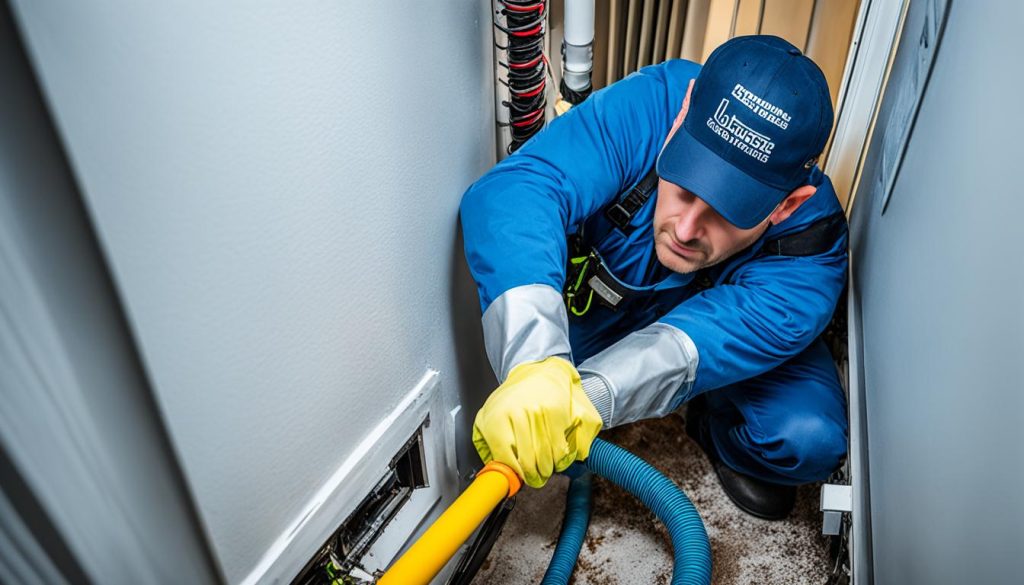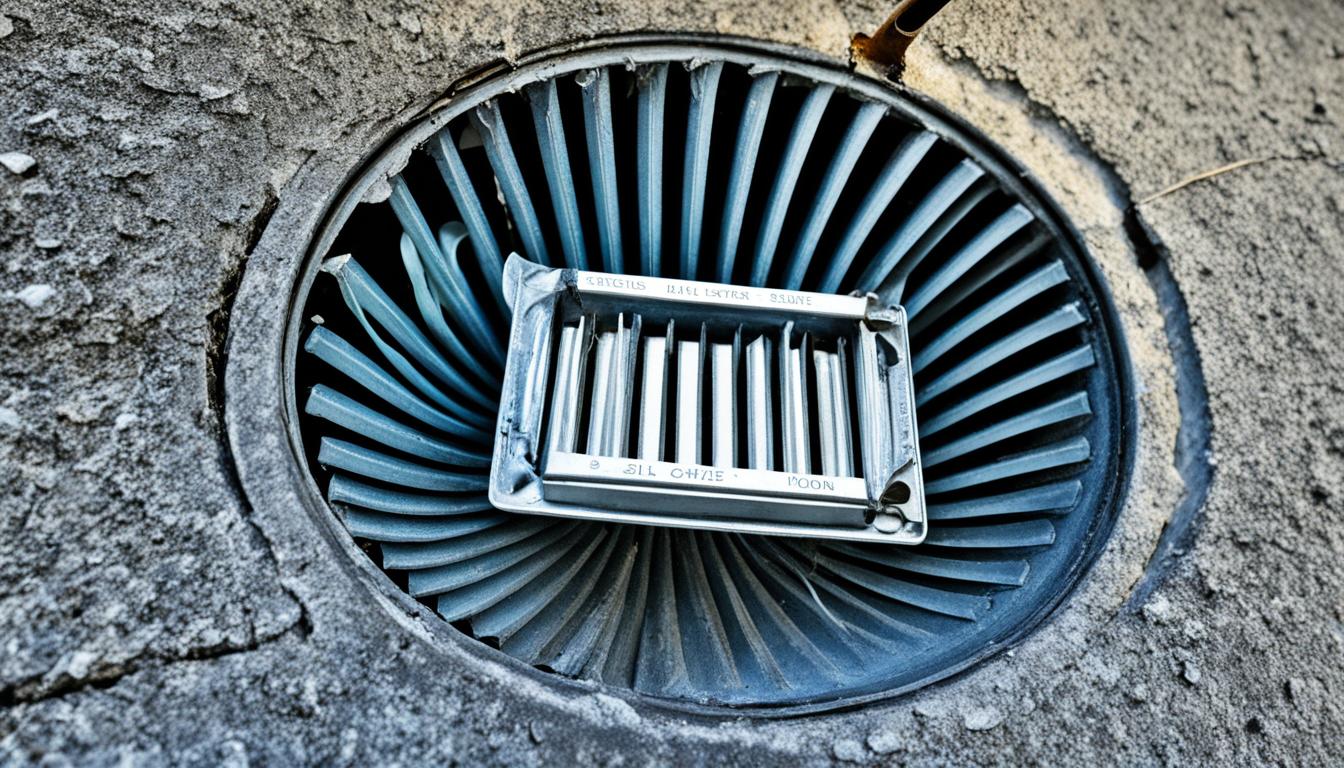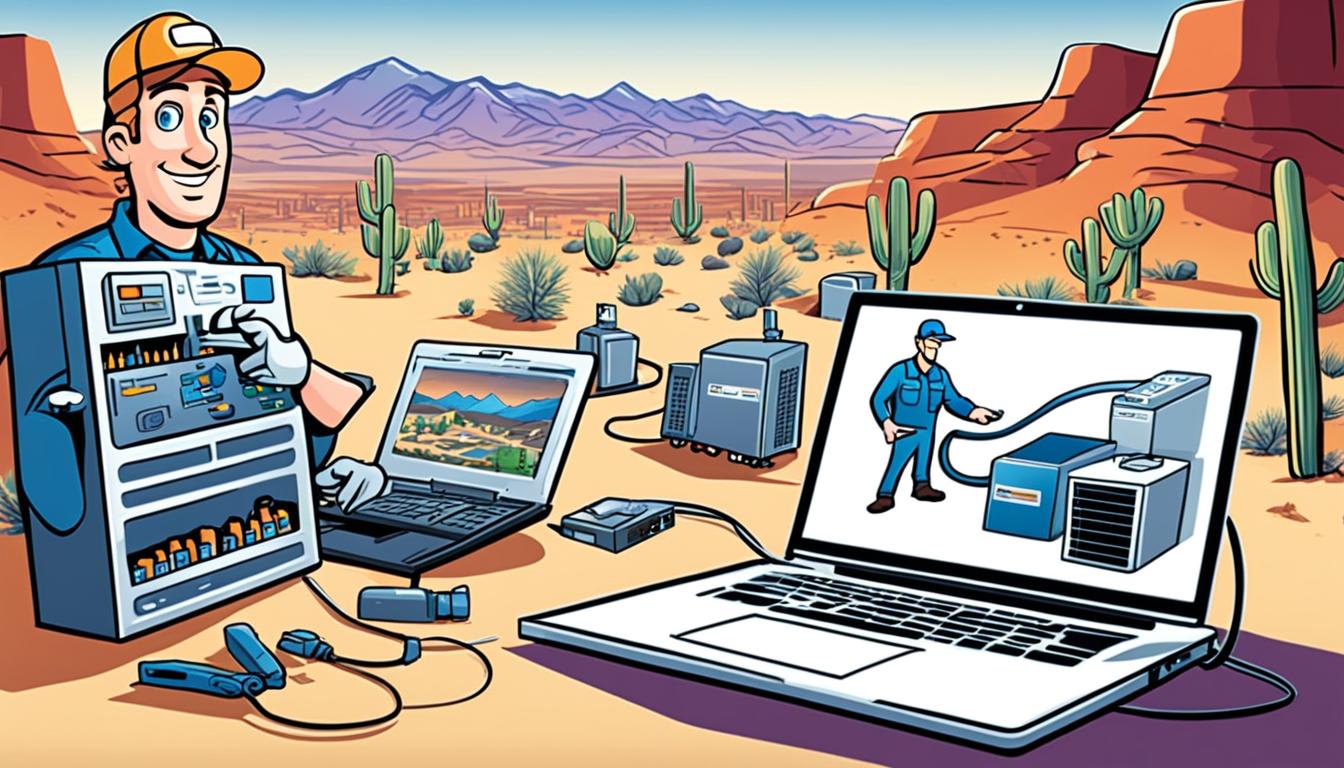Cleaning or repairing a dryer vent is not a task most people look forward to, but it is necessary for maintaining efficiency and safety. When it comes to vent cleaning, there can be various challenges and obstacles to overcome. It’s important to know how to tackle tough vent cleaning situations effectively and safely. Here are some observations and troubleshooting tips based on the experiences of qualified professionals:
Key Takeaways:
- Proper vent cleaning is essential for maintaining efficiency and safety.
- Knowing how to troubleshoot vent cleaning challenges can save time and effort.
- Hiring a licensed professional is the best option for effective vent cleaning.
- Handling hard-to-reach vent cleaning tasks requires careful planning and the right tools.
- Overcoming vent cleaning obstacles is possible with the right strategies and techniques.
Effective Vent Cleaning Solutions
When it comes to tackling tough vent cleaning scenarios, it’s always best to hire a licensed professional. However, if that’s not possible, don’t worry! We’ve gathered some expert tips and best practices to help you handle those hard-to-reach vent cleaning tasks effectively.
1. Start with Proper Preparation
Before you begin cleaning your vents, it’s important to take a few necessary precautions:
- Turn off the power supply to the ventilation system to ensure your safety.
- Cover nearby furniture and surfaces with drop cloths or plastic sheets to protect them from dust and debris.
- Wear protective gear such as gloves, goggles, and a mask to guard against allergens and airborne particles.
2. Use the Right Tools
Having the appropriate tools for the job can make a significant difference in the effectiveness of your vent cleaning. Here are some must-have tools:
- A flexible vent brush to reach deep into the ductwork.
- A vacuum cleaner with a long hose attachment to suck out loosened debris.
- Microfiber cloths or dusters for wiping down the vent covers and surrounding areas.
3. Take a Methodical Approach
To ensure that you clean every corner of your vents thoroughly, follow these steps:
- Remove the vent covers using a screwdriver.
- Gently brush the interior of the vents using the flexible vent brush, starting from one end and working your way through.
- As you loosen the debris, use the vacuum cleaner with the long hose attachment to suck it out.
- After cleaning the vents, wipe down the vent covers and surrounding areas with a microfiber cloth or duster.
- Reattach the vent covers securely.
4. Regular Maintenance
Regular maintenance is key to maintaining clean and efficient vents. Here are some best practices:
- Follow the manufacturer’s recommendations for vent cleaning frequency.
- Inspect your vents regularly for signs of dust, debris, or blockages.
- Consider investing in professional vent cleaning services at least once a year for a thorough cleaning.
By following these expert tips and best practices, you can confidently handle tough vent cleaning jobs and ensure the proper functioning of your ventilation system.
| Common Vent Cleaning Challenges | Solutions |
|---|---|
| Hard-to-reach vents | Use a flexible vent brush or hire a professional with specialized equipment. |
| Heavily clogged vents | Start by loosening the debris with the vent brush and then use a vacuum cleaner to remove it. |
| Dusty vent covers | Wipe them down with a microfiber cloth or duster after cleaning the vents. |
| Inefficient airflow | Regular maintenance and cleaning will help ensure optimal airflow. |
Overcoming Vent Cleaning Obstacles

When it comes to vent cleaning, you may encounter various obstacles that can make the task challenging. However, with the right strategies and techniques, you can overcome these obstacles and ensure effective and thorough vent cleaning.
1. Limited Access to Vents
One of the common obstacles in vent cleaning is limited access to vents. Some vents may be located in tight spaces or positioned high up, making it difficult to reach and clean them properly. To overcome this obstacle:
- Use a vent cleaning brush with an extendable handle to reach inaccessible vents.
- Consider using a vacuum cleaner attachment specifically designed for vent cleaning.
- If necessary, remove and clean the vent cover or grille to gain better access to the vent.
2. Heavy Build-up of Lint or Debris
Another common challenge in vent cleaning is dealing with a heavy build-up of lint or debris, especially in older or neglected vents. This can restrict airflow and increase the risk of fire hazards. To handle this difficult scenario:
- Start by vacuuming the vent opening to remove loose debris.
- Use a vent cleaning brush or a flexible dryer vent cleaning kit to dislodge and remove any stubborn lint or debris.
- Consider using compressed air or a blower to blow out accumulated lint or debris from the vent.
3. Blocked or Damaged Vent Pipes
Blocked or damaged vent pipes can pose a significant obstacle in vent cleaning. These blockages can occur due to bird nests, rodents, or debris accumulation. If you encounter a blocked or damaged vent pipe, take the following steps:
- Inspect the vent pipe carefully to identify the cause of the blockage or damage.
- If it’s a bird nest or animal infestation, contact a wildlife removal specialist to safely remove them.
- For debris blockages, use a vent cleaning brush or a plumbing snake to clear the obstruction.
- If the vent pipe is damaged, consult a professional vent cleaning or repair service to address the issue.
| Challenge | Solution |
|---|---|
| Limited Access to Vents | Use vent cleaning tools with extendable handles Remove and clean vent covers or grilles |
| Heavy Build-up of Lint or Debris | Vacuum the vent opening Use vent cleaning brushes or kits Blow out lint or debris with compressed air |
| Blocked or Damaged Vent Pipes | Contact wildlife removal specialists for infestations Use vent cleaning tools to clear debris Consult professional services for damaged pipes |
Benefits of Proper Vent Cleaning
Regular maintenance and cleaning of your vents provide numerous benefits for your home and HVAC system. By investing time and effort into proper vent cleaning, you can ensure clean and safe airflow, improve efficiency and safety, prolong the lifespan of your appliances, and even save on energy costs.
One of the key advantages of vent cleaning is the promotion of clean and safe airflow throughout your home. Over time, dust, debris, and other contaminants can accumulate in your vents, obstructing proper airflow. This not only decreases the effectiveness of your ventilation system but also poses a potential health risk by circulating pollutants in the air you breathe.
Additionally, by regularly cleaning your vents, you can improve the efficiency and safety of your HVAC system. When vents are clogged, your system has to work harder to push air through, leading to increased energy consumption and potential overheating. Clean vents allow for better airflow, reducing strain on your system and enhancing its performance. This, in turn, helps prevent system malfunctions and extends the lifespan of your appliances.
Moreover, proper vent cleaning can lead to energy savings in the long run. When your vents are clean and free from obstructions, your HVAC system can operate more efficiently, requiring less energy to maintain your desired temperature. This translates to lower energy bills and a reduced carbon footprint, making vent cleaning both environmentally friendly and cost-effective.





0 Comments